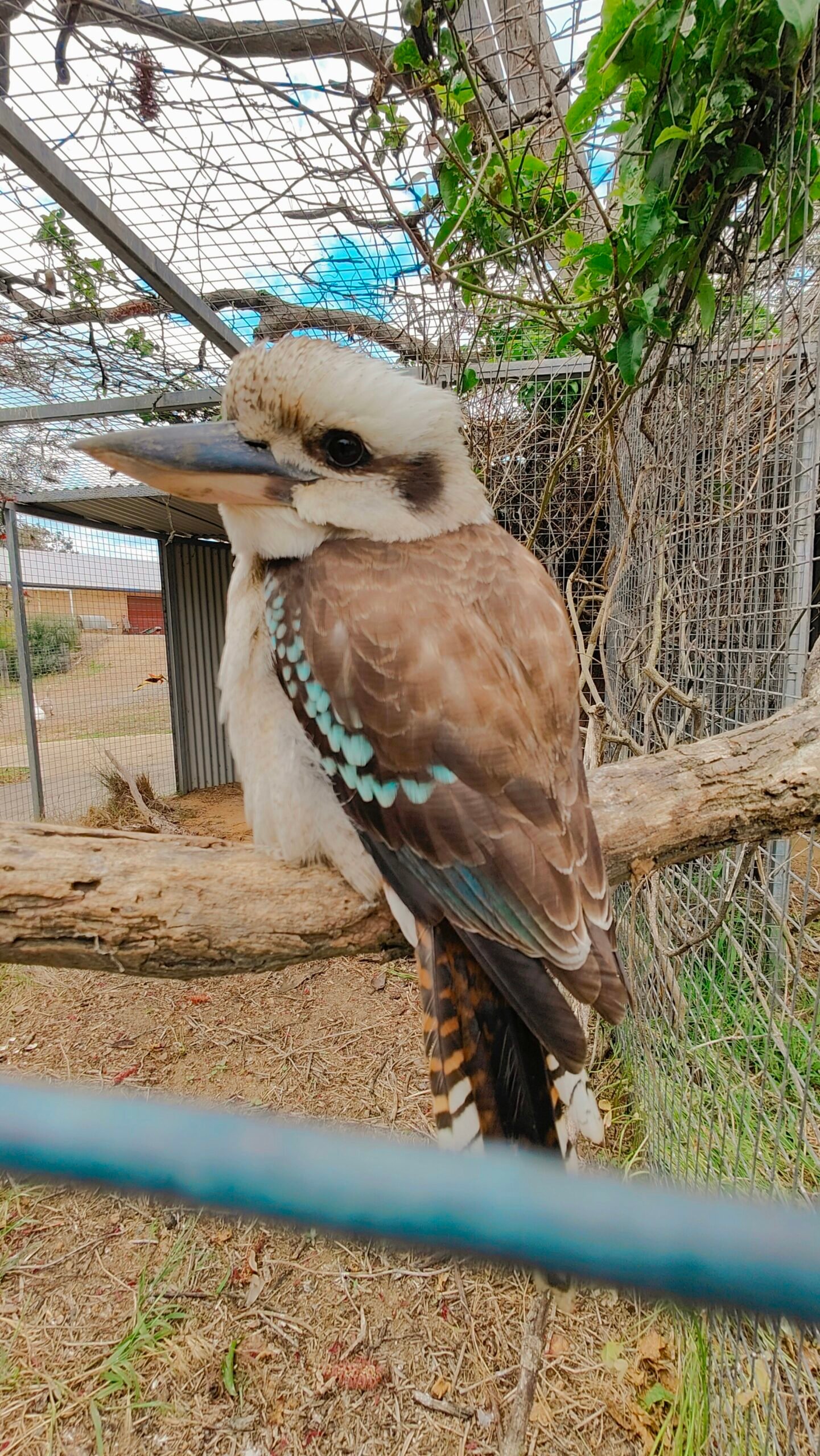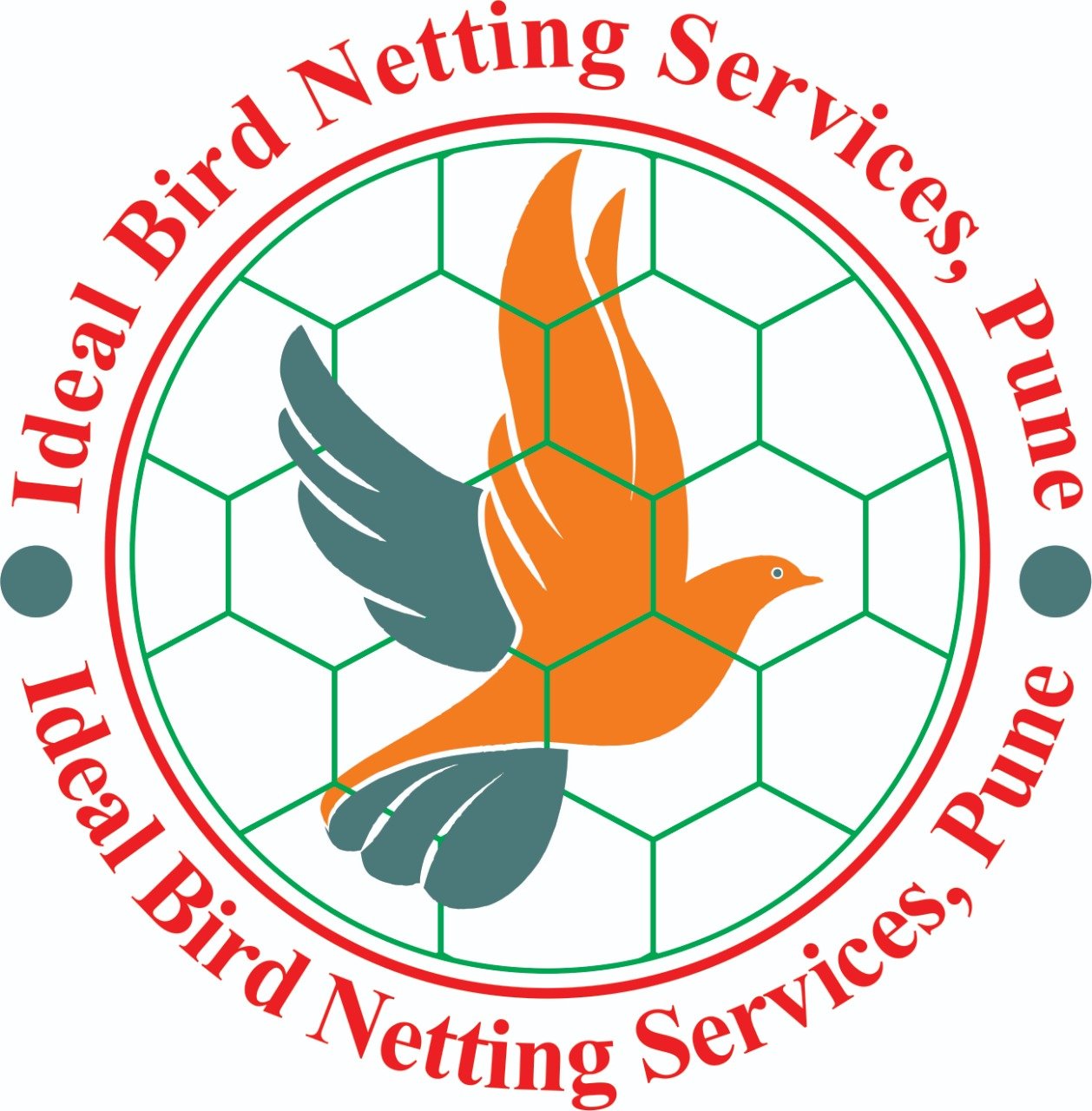<!doctype html>
Which Birds Cause Health Problems in Humans — Risks, Symptoms & Prevention
which-birds-cause-health-problems-in-humans
Birds are beautiful and useful in nature, but certain species can pose health risks for humans when they nest near homes or contaminate public spaces. This long-form guide explains which birds are most commonly linked to human illness, how infections spread, symptoms to watch for, and practical prevention steps — including professional bird netting solutions from Ideal Bird Netting Services.
Overview: Why birds can be a health risk
Birds and their droppings, feathers, nests, and parasites (mites, ticks) can carry pathogens such as bacteria, viruses, and fungi. Many illnesses occur when people inhale dried droppings or dust contaminated with spores, touch surfaces contaminated with bird feces, or have close contact with infected birds (particularly poultry and pet parrots).which-birds-cause-health-problems-in-humans
Bird species commonly associated with health problems
The table below lists common birds that are often associated with human health risks and the key illnesses they can transmit.
| Bird | Main source of infection | Diseases / Health problems |
|---|---|---|
| Pigeon | Droppings, feathers, nests | Histoplasmosis (fungal), Cryptococcosis (fungal), Salmonella contamination, Allergies & asthma worsening |
| Crow | Droppings, scavenging on garbage | Food contamination (Salmonella, E. coli), Indirect role in spread of mosquitoes (West Nile Virus) |
| Parrot / Parakeet | Saliva, droppings, close contact | Psittacosis (Chlamydia psittaci) — can cause severe pneumonia |
| Poultry (Chickens, Ducks) | Direct contact, droppings, undercooked meat | Avian influenza (bird flu), Campylobacter, Salmonella |
| Sparrow / Starling | Nests, droppings | Fungal spores (histoplasma), Allergy and respiratory irritation |
| Seagull | Droppings, contaminated water | Food and water contamination (E. coli, Listeria, Salmonella) |
Detailed look: Major bird-related diseases
1. Histoplasmosis
Caused by the fungus Histoplasma capsulatum which thrives in soil enriched with bird or bat droppings. People can inhale spores when dust containing the fungus becomes airborne. Symptoms range from mild flu-like illness to severe lung disease in susceptible people.
2. Cryptococcosis
A fungal infection linked to pigeon droppings. While typically affecting people with weakened immune systems, it can lead to pneumonia and potentially meningitis.
3. Psittacosis (Ornithosis)
Caused by Chlamydia psittaci, often transmitted by parrots, parakeets, and sometimes pigeons. Symptoms include high fever, cough, headache and can progress to severe pneumonia if untreated. It spreads through inhalation of dried droppings or respiratory secretions.which-birds-cause-health-problems-in-humans
4. Salmonellosis & Campylobacteriosis
Bacteria like Salmonella and Campylobacter can contaminate food and water via bird droppings, and also occur from handling poultry. Symptoms typically include diarrhea, fever and abdominal cramps.which-birds-cause-health-problems-in-humans
5. Avian Influenza (Bird Flu)
Some strains of avian influenza can cross to humans, typically after close contact with infected poultry. This is a public health concern during outbreaks in poultry farms and markets.
How infections commonly spread
- Inhalation: Dried droppings and nest dust carry fungal spores and bacteria that become airborne.

- Direct contact: Touching contaminated surfaces, eggs, or handling infected birds without protection.
- Food & water contamination: Birds contaminate surfaces where food is prepared or stored; coastal birds can contaminate water sources.
- Vectors: Bird presence can increase local mosquito or rodent populations that carry other diseases.which-birds-cause-health-problems-in-humans

Symptoms in humans to watch for
Symptoms vary by disease but common warning signs include:
- Persistent cough or breathlessness
- Fever, chills, body aches
- Severe headache or confusion (with cryptococcosis/psittacosis complications)
- Diarrhoea and abdominal cramps (bacterial infections)
- Worsening asthma or allergic reactions
If you develop high fever, difficulty breathing, or neurological signs after prolonged exposure to bird droppings or sick birds, seek medical attention promptly and tell your doctor about the exposure.
Practical prevention steps for homeowners & businesses
Simple prevention measures drastically reduce risk:
- Do not feed wild birds near your home — feeding encourages congregation and nesting.
- Remove nests and droppings carefully: Use a mask (N95 if available), gloves and wet methods to avoid creating dust. Disinfect surfaces after cleaning.
- Seal access points: Close gaps in roofs, vents, and balconies where birds can roost or nest.
- Maintain good waste management: Keep garbage sealed so scavengers like crows and gulls won’t be attracted.
- Cook poultry thoroughly: Avoid raw or undercooked poultry to prevent Salmonella and Campylobacter infections.
Why professional bird netting helps
Bird netting is a humane, long-lasting solution to keep birds away from balconies, windows, roofs and commercial structures. Properly installed UV-stabilized nets prevent nesting and roosting without harming birds.
- Prevents accumulation of droppings and nests
- Removes the source of airborne fungal spores
- Reduces the need for frequent, risky cleaning
- Improves property aesthetics and safety
DIY vs Professional installation — what to consider
DIY kits are available but have limitations. For effective, long-lasting protection, professional installation provides:
- Correct net tension and anchoring to avoid sagging
- UV-stable, fire-retardant material selection
- Safe installation practices around electricals and heights
- Warranty and routine maintenance options
Case study: Balcony pigeon problem — step-by-step solution
Problem: Pigeons nesting on a 3rd-floor balcony left heavy droppings and created foul smell, causing family respiratory complaints.
Solution implemented:
- Initial inspection and photos to assess entry points.
- Safe removal of old nests and droppings by trained crew using PPE and disinfectant.
- Installation of custom-cut UV-stable bird net fixed to balcony frame with stainless anchors.
- Post-installation inspection and customer education on cleaning and checks.
Outcome: No pigeon entry after installation, improved air quality, and family reported fewer allergy symptoms within weeks.
FAQ — Frequently asked questions
- Is bird netting safe for birds?
- Yes — when installed correctly, bird netting is a humane barrier that prevents birds from nesting or roosting without harming them.
- How long does bird netting last?
- High-quality UV-stabilized netting typically lasts 5–10 years depending on sun exposure and maintenance.
- Can bird droppings make my family sick?
- Yes — dried droppings can carry fungal spores and bacteria that may cause respiratory illnesses, infections, or worsen asthma.
- Do you provide service across Pune & Pimpri-Chinchwad?
- Ideal Bird Netting Services supports installations across Pune and Pimpri-Chinchwad. Contact us for an in-home quote.
Local SEO: Serving Pune & Pimpri-Chinchwad
Ideal Bird Netting Services provides professional bird netting in Pune and nearby areas including Pimpri-Chinchwad, Wakad, Hinjewadi, Kharadi, Baner, and Aundh. Our bird netting in Pune solutions protect balconies, terraces, commercial spaces, and warehouses from pigeons, sparrows, crows and other nuisance birds. For a free site inspection in Pune, call us today — we specialise in customised bird netting in Pune installations that are durable, UV-stable, and warranty-backed.
On-page SEO signals added
- Keyword: bird netting in Pune included in headings, first 100 words, and contact block.
- Service areas (Pune neighbourhoods) listed for local relevance.
- Schema markup updated to include serviceArea and areaServed for Pune.
Image placeholders & alt text (suggested)
Below are recommended images to include on the page. Add compressed, web-optimized photos with the suggested filenames and alt text to help SEO.
- Filename: balcony-bird-netting-pune.jpg — Alt: “Balcony bird netting in Pune installed by Ideal Bird Netting Services”
- Filename: pigeon-droppings-before-after.jpg — Alt: “Before and after balcony showing pigeon droppings removed and netting installed in Pune”
- Filename: installation-team-pune.jpg — Alt: “Professional bird netting installation team in Pune using UV-stable nets”
- Filename: closeup-net-uv.jpg — Alt: “Close-up of UV-stable bird net material used for bird netting in Pune”
- Filename: customer-testimonial-pune.jpg — Alt: “Happy customer after balcony bird netting installation in Pune”
Short versions for social & Google Business
Use these ready-made snippets for Facebook/Instagram, LinkedIn and a Google Business Post.


Facebook / Instagram (caption)
“Tired of pigeons on your balcony? 🐦 Keep your home clean and healthy with professional bird netting in Pune by Ideal Bird Netting Services. UV-stable nets, safe installation, local teams across Pune & Pimpri-Chinchwad. Book a free inspection today! 📞 +91 90755 24122″
LinkedIn (short)
“Protect your property and tenants with professional bird netting in Pune. Ideal Bird Netting Services offers durable, warranty-backed installations for residential and commercial spaces. Contact us for site inspection and a custom quote.”
Google Business Post
“New install today: balcony bird netting in Kharadi, Pune. Say goodbye to pigeon droppings and health concerns — request a free inspection from Ideal Bird Netting Services. Call +91 90755 24122 or message us here.”
Suggested JSON-LD update (serviceArea)
{
"@context": "https://schema.org",
"@type": "Service",
"name": "Bird Netting Services",
"provider": {"@type": "LocalBusiness", "name": "Ideal Bird Netting Services"},
"serviceArea": {
"@type": "Place",
"name": "Pune, Maharashtra, India"
},
"areaServed": ["Pune","Pimpri-Chinchwad","Wakad","Hinjewadi","Kharadi","Baner","Aundh"]
}
Contact & Book an Inspection
Ideal Bird Netting Services — Protect your home and family.
Address: New DP Road, NSG Royal One, Vishal Nagar, Pune, Maharashtra.
Phone: +91 90755 24122
Or use our online contact form to request a free inspection.

Introduction to Avian-Related Health Issues
In recent years, the interaction between humans and birds has significantly increased, particularly in urban settings where both domesticated and wild bird populations thrive. This burgeoning relationship, while often enriching and delightful, also comes with certain health risks that are paramount to understand for both avid bird enthusiasts and the general public. As people engage more closely with birds, whether through feeding, pet ownership, or simply enjoying their presence in parks and backyards, the potential for exposure to avian-related illnesses rises.
Birds can serve as vectors for a variety of diseases, posing risks to human health through direct contact or environmental exposure. The pathogens found in bird droppings or feathers can be harmful, leading to conditions like histoplasmosis, psittacosis, and cryptococcosis. These ailments can manifest in respiratory issues, fever, or severe systemic infections, particularly in individuals with compromised immune systems. Thus, understanding the connection between birds and human health is essential for preventing illness and ensuring safe interactions.
The role of urbanization in increasing avian-human interactions cannot be overlooked. As cities expand, natural habitats for birds are often compromised, prompting species to adapt to human environments. This adaptability can lead to closer contact with humans and their pets, thereby heightening the risk of disease transmission. Furthermore, as awareness of these risks grows among the public, it is crucial to educate individuals about safe practices when engaging with bird populations, such as wearing gloves when handling bird feeders or being cautious around areas frequented by wild birds.
In the subsequent sections, we will delve deeper into specific bird species, the diseases they may carry, and preventative measures that can mitigate health risks associated with avian-related illnesses. The emphasis will remain on fostering a healthy coexistence between humans and birds, ensuring that both parties benefit from this relationship while minimizing health threats.
Common Birds Associated with Health Problems
Birds have become an integral part of urban environments, providing beauty and companionship while also raising health-related concerns among humans. Among the various species, pigeons, parrots, and chickens are notable examples that can have adverse effects on human health. Understanding these birds and their typical behaviors can help mitigate risks associated with avian-related illnesses.
Pigeons, often seen in city parks and streets, are common carriers of a variety of diseases. Their droppings can harbor pathogens such as Cryptococcus, which can cause respiratory issues in humans. Moreover, pigeon feathers and droppings provide a conducive environment for mold growth, potentially leading to allergic reactions and other health complications. As urban dwellers tend to come into contact with pigeons frequently, it is crucial to practice proper hygiene and avoid direct interaction wherever possible to reduce health risks.
Parrots, popular pets in many households, are also associated with certain health concerns. They can carry psittacosis, an infection caused by the Chlamydia psittaci bacterium, which is transmissible to humans, typically through inhalation of dried droppings or respiratory secretions. Symptoms in humans can range from mild flu-like symptoms to pneumonia, underscoring the need for responsible bird ownership and awareness of hygiene practices when handling these birds.
Lastly, chickens, prevalent in both urban and rural settings, can be a source of Salmonella and Campylobacter infections, primarily due to handling contaminated eggs or raw poultry. These bacteria can lead to gastrointestinal illnesses in humans, necessitating proper food handling and sanitation measures to minimize risks. With the rise in backyard chicken-keeping, awareness about the associated health risks has become increasingly important.
In summary, common birds like pigeons, parrots, and chickens are linked to various health issues in humans. Understanding their behaviors and potential risks can help individuals take proactive measures to protect their health while still enjoying the presence of these birds in our environment.
Types of Health Risks from Birds
Avian-related health risks can be categorized into several distinct types, primarily including zoonotic diseases, allergic reactions, and respiratory issues stemming from bird droppings. Zoonotic diseases are infections that can be transmitted from birds to humans, with notable examples being psittacosis, histoplasmosis, and salmonellosis. Such diseases are often contracted through direct contact with infected birds or contaminated environments. The level of risk associated with these zoonotic diseases can differ significantly based on both the species of the bird and the surrounding habitat. For instance, pet birds, such as parrots, are frequently associated with psittacosis, while wild birds can be carriers of histoplasmosis spores found in their droppings.
In addition to these diseases, some individuals may experience allergic reactions to bird dander, feathers, or droppings. These allergies can manifest as respiratory issues, skin irritations, or other symptoms, particularly in sensitive populations. Specifically, those with pre-existing allergic conditions, like asthma, may find their symptoms exacerbated in environments rich in bird allergens. Hence, the duration of exposure to birds plays a critical role in determining individual risk levels.
Furthermore, respiratory problems can arise from inhaling particles associated with bird droppings. The dust generated from dried excrement can contain harmful pathogens and allergens, leading to conditions such as bird fancier’s lung, a type of hypersensitivity pneumonitis. Risk factors influencing this condition include not only the type of birds present but also the duration of exposure and the overall health of the individual. It is crucial to consider these various elements when evaluating the health risks posed by birds in different environments, as well as the potential impact on human health.
Recognizing Symptoms of Avian-Related Illnesses
Human interactions with birds can lead to a variety of avian-related illnesses. Understanding the symptoms associated with these conditions is crucial for early detection and effective treatment. One of the most common health issues arising from exposure to birds is respiratory infections, such as psittacosis, which is caused by the bacteria Chlamydia psittaci. Symptoms may include persistent cough, fever, chills, and shortness of breath. Recognizing these signs early is essential for prompt medical intervention.
Allergies are another significant concern for individuals who frequently interact with birds. Common allergens derived from avian species include droppings, feathers, and dander. Symptoms of bird allergies can manifest as sneezing, nasal congestion, itchy or watery eyes, and skin rashes. Individuals who are allergic may experience exacerbated symptoms during periods of close contact, such as when cleaning bird cages or handling feathers. Those with a known history of allergies should remain vigilant about their symptoms and consider consulting a healthcare professional for management strategies.
In more severe cases, exposure to bird-related pathogens can lead to serious conditions such as bird flu or West Nile virus. Symptoms related to these illnesses can range from mild fever and headache to severe respiratory distress or neurological issues. It is vital for caregivers and individuals working with birds to be cognizant of these varied symptoms, as timely medical assistance can significantly mitigate health risks. For anyone experiencing unusual symptoms following exposure to birds, seeking the advice of a healthcare provider promptly is crucial. Overall, heightened awareness among those in frequent contact with avian species can lead to better health outcomes and reduced incidence of avian-related illnesses.
Preventive Measures to Reduce Health Risks
Minimizing health risks associated with avian-related illnesses requires a multifaceted approach that includes preventive strategies and vigilant practices. First and foremost, maintaining a safe distance from wild birds is crucial. Encounters with wild species can expose individuals to various pathogens. It is advisable to avoid feeding wild birds, as this can not only attract them to residential areas but may also bring them into closer proximity to humans, increasing the risk of disease transmission.
For those owning pet birds, regular veterinary care is essential. This includes routine health checks as well as vaccinations against common diseases that may affect both birds and humans, such as Psittacosis. Owners should consult their avian veterinarian to ensure that all necessary vaccinations are administered and to discuss any health concerns regarding their pets. Furthermore, creating a clean environment for pet birds is vital. This encompasses daily cleaning of cages, feeding areas, and surrounding surfaces to eliminate droppings and food remnants that can harbor pathogens.
Another key element in reducing health risks related to birds is stringent hygiene practices. Individuals should wash their hands thoroughly with soap and water immediately after any contact with birds or their environments. It is equally important to wear gloves when handling pet birds or cleaning their cages to avoid direct skin contact with potential pathogens. When working in areas frequented by birds, such as parks or gardens, personal protective equipment, including masks, may be necessary, particularly for those with compromised immune systems.
Furthermore, educating oneself about the symptoms of common avian-related illnesses is essential to recognize potential health threats early. Awareness allows for prompt medical attention and can significantly reduce complications arising from neglecting potential symptoms. By adopting these preventive measures, individuals can contribute to a safer environment for both themselves and the avian species they encounter.
The Role of Public Health Initiatives
Public health initiatives play a crucial role in mitigating the risks associated with avian-related illnesses that can affect humans. Given the intricate relationship between humans and birds, especially in urban environments, these initiatives are essential for monitoring, educating, and controlling potential health threats. Organizations such as the Centers for Disease Control and Prevention (CDC) and the World Health Organization (WHO) actively engage in efforts to identify and manage diseases that can be transmitted from birds to humans, such as avian influenza and psittacosis.
Monitoring avian-related diseases involves comprehensive surveillance systems. Public health agencies work closely with wildlife biologists and epidemiologists to track bird populations and identify potential outbreaks. By collecting data on bird health and behavior, these organizations can predict and prepare for possible transmissions to human populations. Assessing and controlling avian disease transmission becomes increasingly important in urban settings where human and bird interactions are frequent. Initiatives like effective waste management and controlling the urban bird population help mitigate these risks significantly.
Moreover, community outreach and education are vital components of public health initiatives. These programs aim to inform the public about the potential health risks associated with birds, how to recognize symptoms of avian-related diseases, and the preventive measures individuals can take. Workshops, seminars, and informational campaigns are often utilized to raise awareness about the proper handling of birds, the importance of sanitation, and how to report unusual bird behaviors or sudden die-offs. By fostering a well-informed community, these initiatives not only reduce the risks of avian-related illnesses but also promote safer interactions with the diverse bird populations found in urban surroundings.
Case Studies: Incidents of Bird-Related Illnesses
Bird-related illnesses have been documented in various populations, shedding light on the potential health risks posed by avian exposure. One notable case involved a 45-year-old man who developed severe respiratory distress after cleaning bird droppings in his attic. Upon hospitalization, he was diagnosed with psittacosis, an infectious disease caused by Chlamydia psittaci, which can be transmitted from birds to humans. This case highlights how individuals engaged in activities such as cleaning or handling birds are particularly at risk, underlining the importance of protective measures in such scenarios.
Another instance occurred in a young woman who frequently visited a local bird sanctuary. She exhibited flu-like symptoms that eventually escalated into a severe pneumonia diagnosis. Confirmed through serological testing, her illness was attributed to exposure to parakeets, which are known carriers of the avian influenza virus. This case serves as a reminder that even seemingly healthy birds can harbor pathogens capable of affecting human health, particularly in settings where multiple birds are present.
An alarming case in a rural community involved a cluster of people who developed histoplasmosis, a fungal infection associated with bird droppings. The outbreak was traced back to an abandoned building that had accumulated substantial amounts of guano. This incident particularly affected individuals engaged in demolition and renovation work, leading to initial misdiagnoses of flu-like symptoms. The subsequent identification of histoplasmosis in multiple cases emphasized the risks associated with inadequate ventilation and exposure to contaminated environments.
These case studies underscore the varying severity of avian-related illnesses. They illustrate that individuals who work closely with or are frequently exposed to birds, whether in domestic or wild settings, should remain aware of potential health implications. Measures such as proper hygiene, use of personal protective equipment, and prompt medical attention upon experiencing unusual symptoms can significantly mitigate these risks.
Expert Opinions: Insights from Avian Health Specialists
Avian health specialists play a pivotal role in understanding the complex relationship between birds and human health. A key observation made by Dr. Emily Thomas, a prominent avian veterinarian, emphasizes the importance of continuous research in this field. She notes, “The growing interaction between humans and birds in urban settings can lead to an increased risk of exposure to zoonotic diseases, highlighting the need for ongoing studies about avian-related health risks.” This underscores the necessity for comprehensive investigation into how shared environments contribute to the spread of illnesses.
In addition to research, practical recommendations from experts can significantly mitigate health risks. Dr. Samuel Lee, an epidemiologist specializing in zoonotic infections, suggests that awareness is paramount. He states, “Educating the public on the signs of avian illnesses and how to recognize potential symptoms can play a crucial role in early detection and prevention.” Moreover, specialists advocate for preventive measures such as regular health check-ups for birds and implementation of proper hygiene practices to limit exposure.
As the field of avian medicine evolves, specialists are predicting trends that may reshape our understanding of avian-related health risks. Dr. Lisa Gonzalez, a researcher focused on avian diseases, predicts an increase in reports of chronic conditions linked to bird interactions. “With climate change impacting bird migration patterns, there is a possibility of new disease transmission pathways emerging, emphasizing the need for adaptive strategies in public health”. This highlights the importance of proactively addressing potential future challenges stemming from avian health issues and their implications for humans.
Through their insights, avian health specialists provide a critical lens on the risks associated with bird-related health issues. Their recommendations, based on solid research and emerging trends, are essential for promoting better public understanding and preparedness in managing potential health impacts arising from avian interactions.
Conclusion: Staying Informed and Safe
Understanding the potential health risks associated with avian species is essential for both bird enthusiasts and the general public. Throughout this blog post, we have discussed various illnesses linked to birds, including avian influenza, psittacosis, and histoplasmosis. Each of these diseases presents unique symptoms and severity levels, underlining the necessity for awareness and education. Recognizing early signs of avian-related illnesses can significantly improve the outcome for affected individuals.
To minimize the risk of contracting diseases from birds, it is crucial to implement preventive strategies. Simple actions such as practicing good hygiene, ensuring proper ventilation in areas where birds are housed, and seeking timely medical advice when symptoms arise can help in safeguarding one’s health. Additionally, individuals should be cautious when handling birds, their droppings, or any materials that might carry infectious agents.
Public awareness plays a vital role in reducing incidences of avian-related illnesses. Engaging with health officials and paying attention to their recommendations can provide critical insights into emerging threats and recommended preventive measures. It is also beneficial to remain up-to-date with local health guidelines regarding avian interactions, especially in areas where birds are prevalent.
Forming safe and knowledgeable relationships with birds enhances the experience of birdwatching, pet ownership, or even professional dealings with avian species. By remaining informed, acting on expert advice, and exercising caution, individuals can enjoy the beauty and benefits of birds while minimizing potential health risks. Staying alert and proactive will ultimately foster a safer environment for both humans and our feathered counterparts. https://invisiblegrillservices.in/

